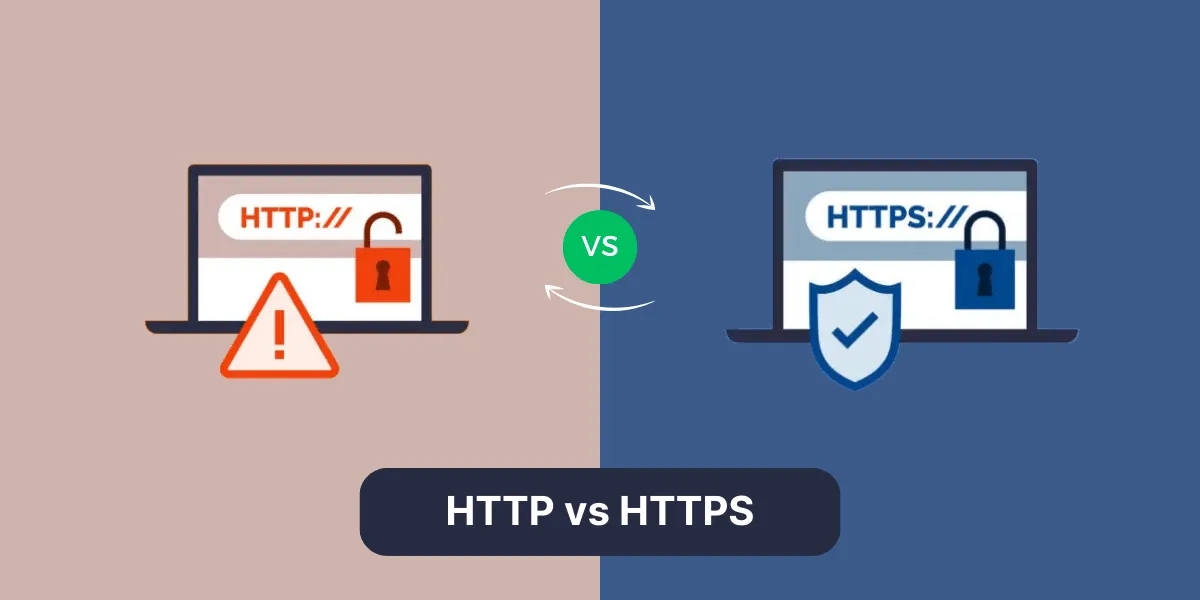HTTP vs HTTPS
 SHAHBAZ ANSARI
SHAHBAZ ANSARI
Introduction
In the digital world, secure communication is essential to protect sensitive information from cyber threats. Two widely used protocols for transmitting data over the web are HTTP (Hypertext Transfer Protocol) and HTTPS (Hypertext Transfer Protocol Secure). While both serve as the foundation for web communication, HTTPS provides an extra layer of security. In this article, we will explore the differences between HTTP and HTTPS, why security matters, and how HTTPS enhances web safety.
What is HTTP?
HTTP, or Hypertext Transfer Protocol, is a communication protocol used to transfer data between a web browser and a web server. It is a stateless protocol, meaning each request from a client (browser) to a server is treated independently without retaining any session information. HTTP is used for loading web pages, fetching resources, and sending data over the internet.
Characteristics of HTTP:
Data is transmitted in plaintext, making it vulnerable to interception.
Lacks encryption, allowing attackers to perform man-in-the-middle (MITM) attacks.
Faster than HTTPS as there is no encryption overhead.
Uses port 80 for communication.
What is HTTPS?
HTTPS, or Hypertext Transfer Protocol Secure, is an advanced and secure version of HTTP. It integrates SSL (Secure Sockets Layer) or TLS (Transport Layer Security) encryption to protect data transmitted between a user’s browser and a web server. HTTPS ensures confidentiality, integrity, and authentication, making it the preferred choice for secure web browsing.
Characteristics of HTTPS:
Encrypts data transmission using SSL/TLS to prevent unauthorized access.
Ensures secure communication, protecting against eavesdropping and cyber threats.
Uses port 443 instead of port 80.
Boosts user trust with the presence of a padlock icon in the browser address bar.
Key Differences Between HTTP and HTTPS
| Feature | HTTP | HTTPS |
| Security | No encryption, vulnerable to attacks | Encrypted using SSL/TLS |
| Data Protection | Data is transmitted in plaintext | Data is encrypted and secure |
| Speed | Faster due to lack of encryption | Slightly slower due to encryption overhead |
| Port Used | Port 80 | Port 443 |
| SEO Impact | No SEO benefits | Improves SEO ranking as per Google’s algorithm |
| Trust Level | Less secure, no padlock icon | More secure, displays padlock icon |
Why HTTPS is important?
With increasing cyber threats, HTTPS has become the standard for secure web communication. Here are a few reasons why HTTPS is essential:
Data Encryption: HTTPS encrypts all data exchanges, ensuring confidentiality and preventing data breaches.
Authentication: SSL/TLS certificates validate the authenticity of the website, preventing phishing attacks.
SEO Benefits: Google favors HTTPS websites in search rankings, giving them a competitive edge.
User Trust: Websites using HTTPS display a padlock icon, reassuring users that their data is secure.
Protection from MITM Attacks: HTTPS prevents hackers from intercepting and modifying data during transmission.
How to migrate from HTTP to HTTPS?
If you own a website and want to switch from HTTP to HTTPS, follow these steps:
Obtain an SSL/TLS Certificate: Purchase or acquire a free SSL certificate from a trusted Certificate Authority (CA) like Let’s Encrypt.
Install the Certificate: Configure your web server to use SSL/TLS.
Update Internal Links: Ensure all website links point to HTTPS instead of HTTP.
Redirect HTTP to HTTPS: Set up 301 redirects to force HTTPS connections.
Update Search Console & Analytics: Inform Google Search Console and other analytics tools about the change.
Conclusion
In today’s internet landscape, security is non-negotiable. While HTTP was the standard in the past, HTTPS has become essential for ensuring secure web communications. With encryption, authentication, and SEO benefits, HTTPS is the go-to protocol for businesses and individuals aiming to enhance online security. Whether you are a website owner or a regular internet user, always prioritize HTTPS for a safer browsing experience.
Subscribe to my newsletter
Read articles from SHAHBAZ ANSARI directly inside your inbox. Subscribe to the newsletter, and don't miss out.
Written by

SHAHBAZ ANSARI
SHAHBAZ ANSARI
Software Developer | Full Stack Developer |